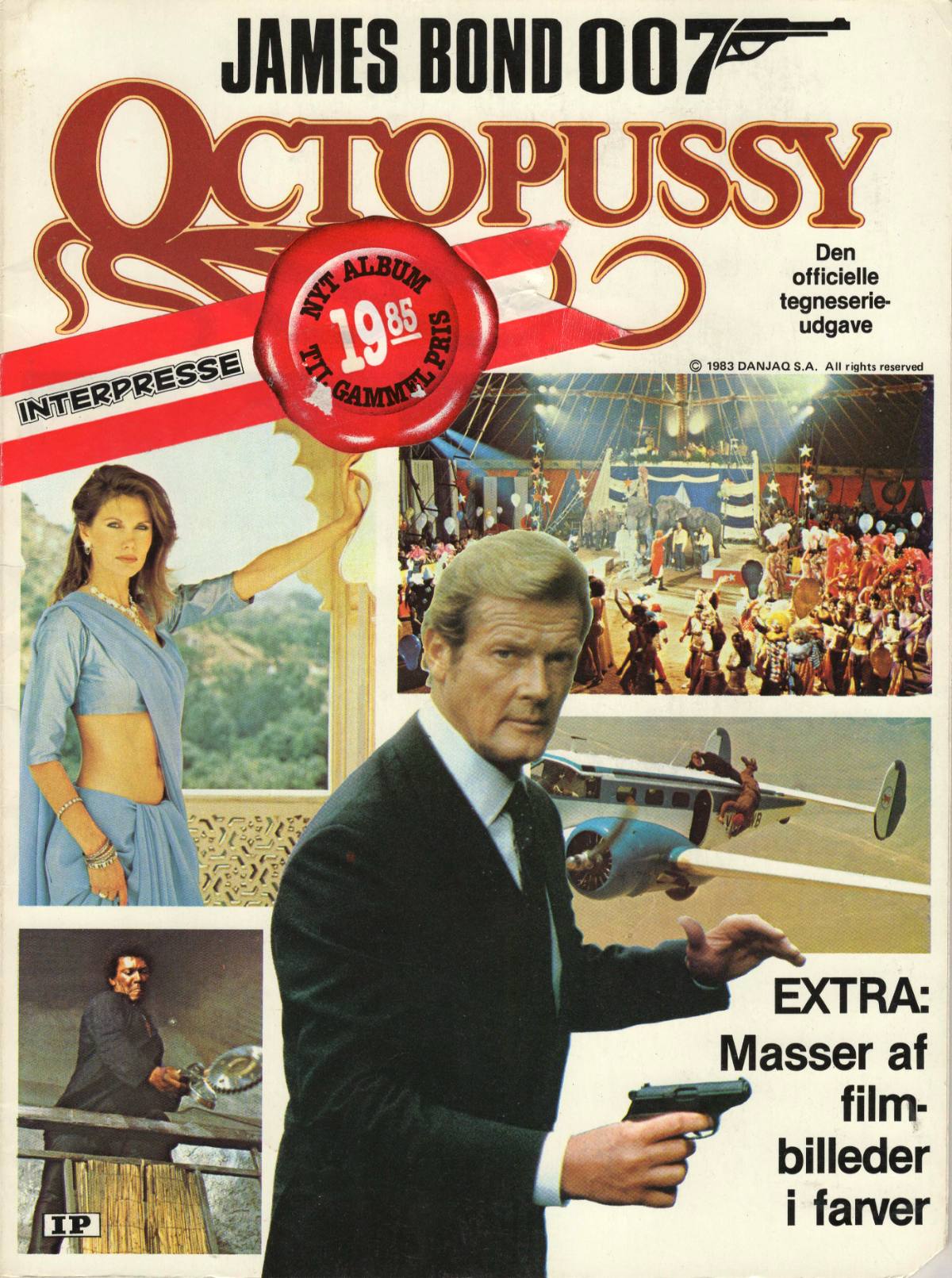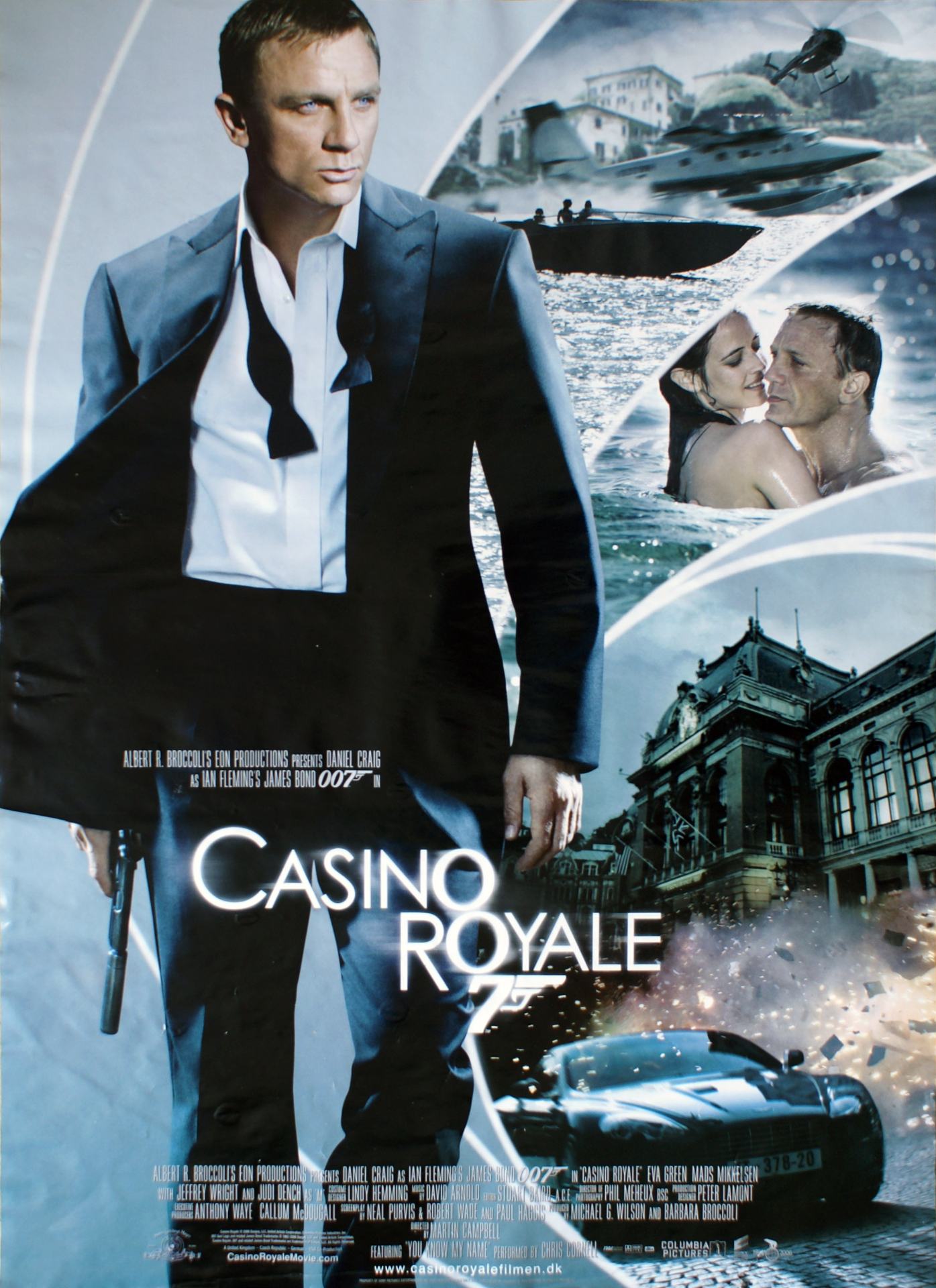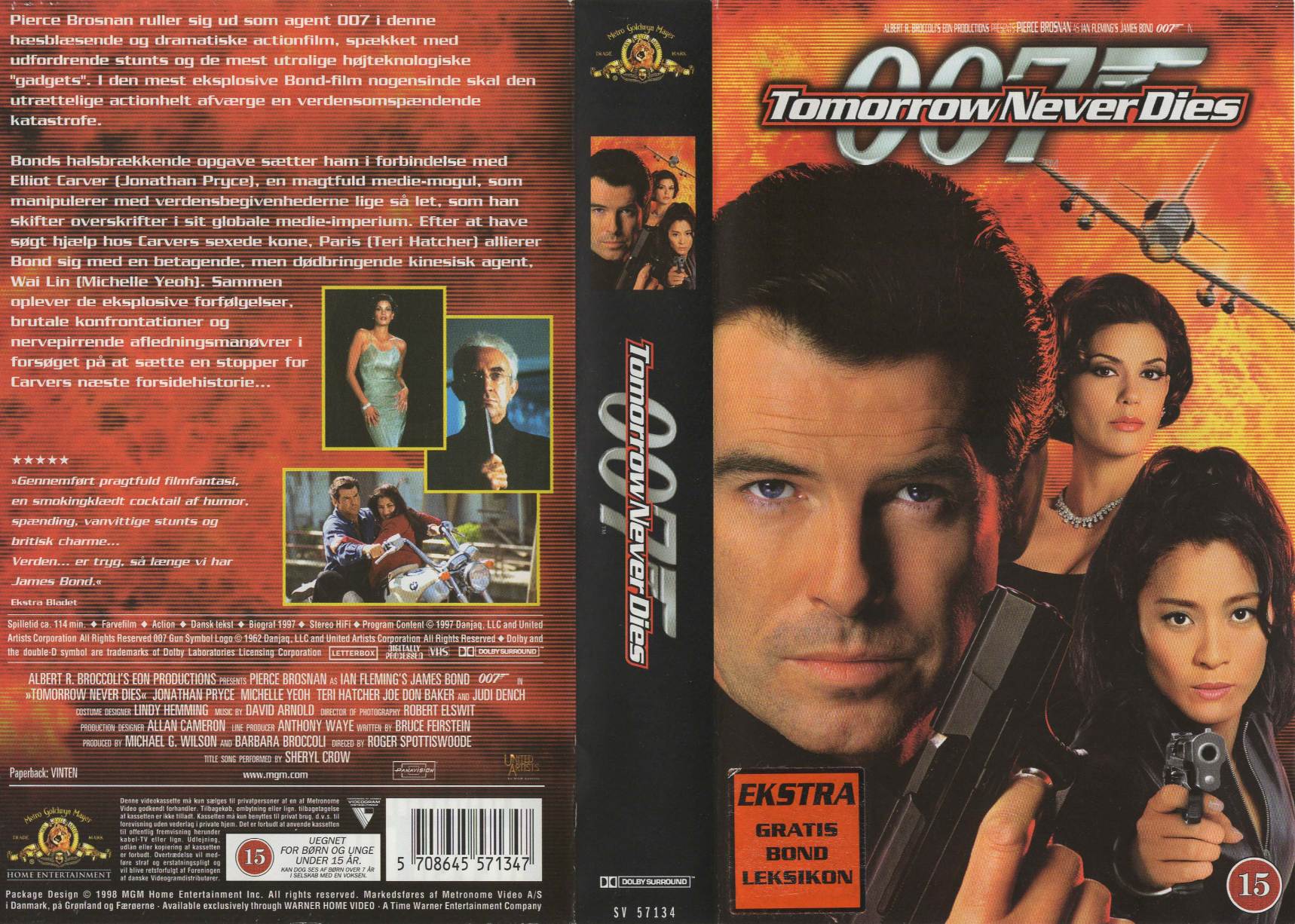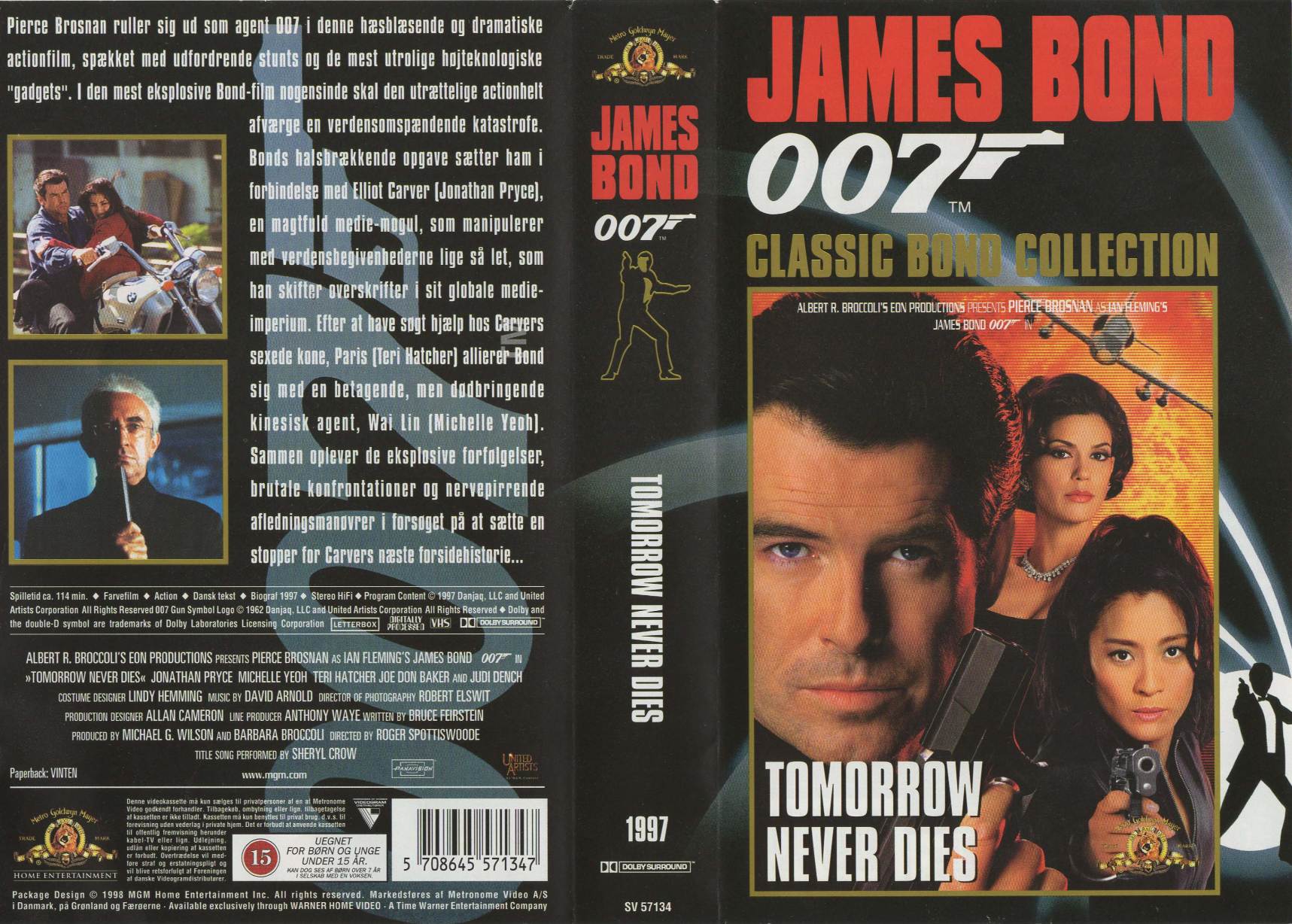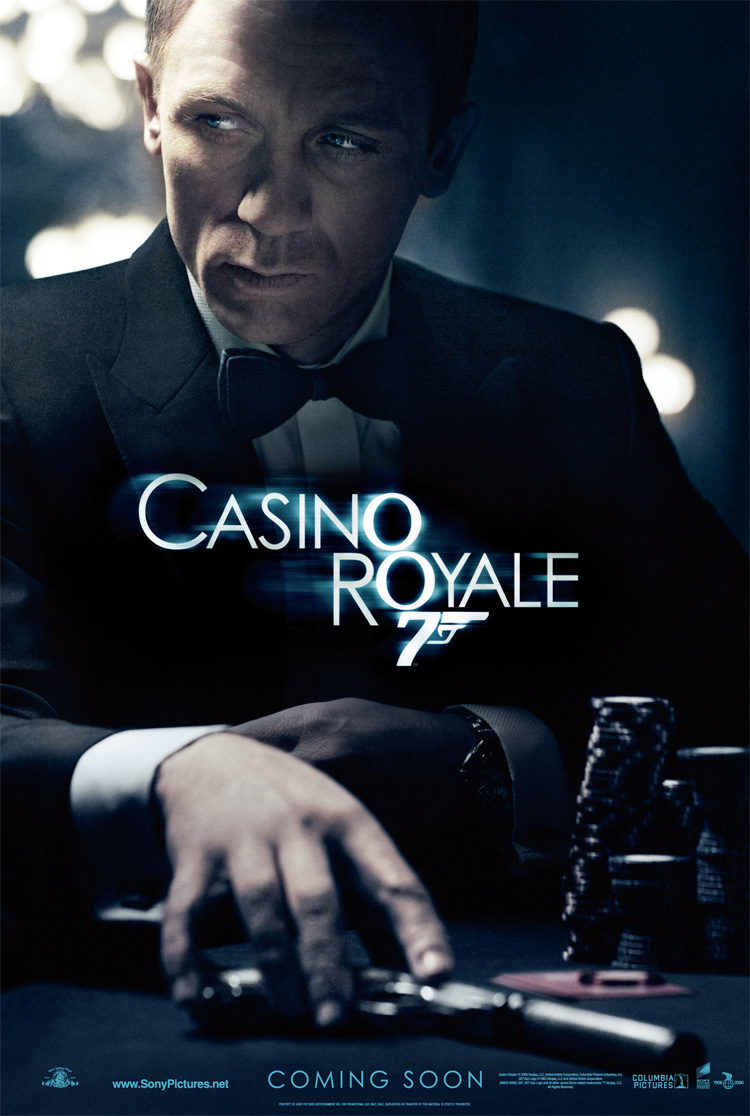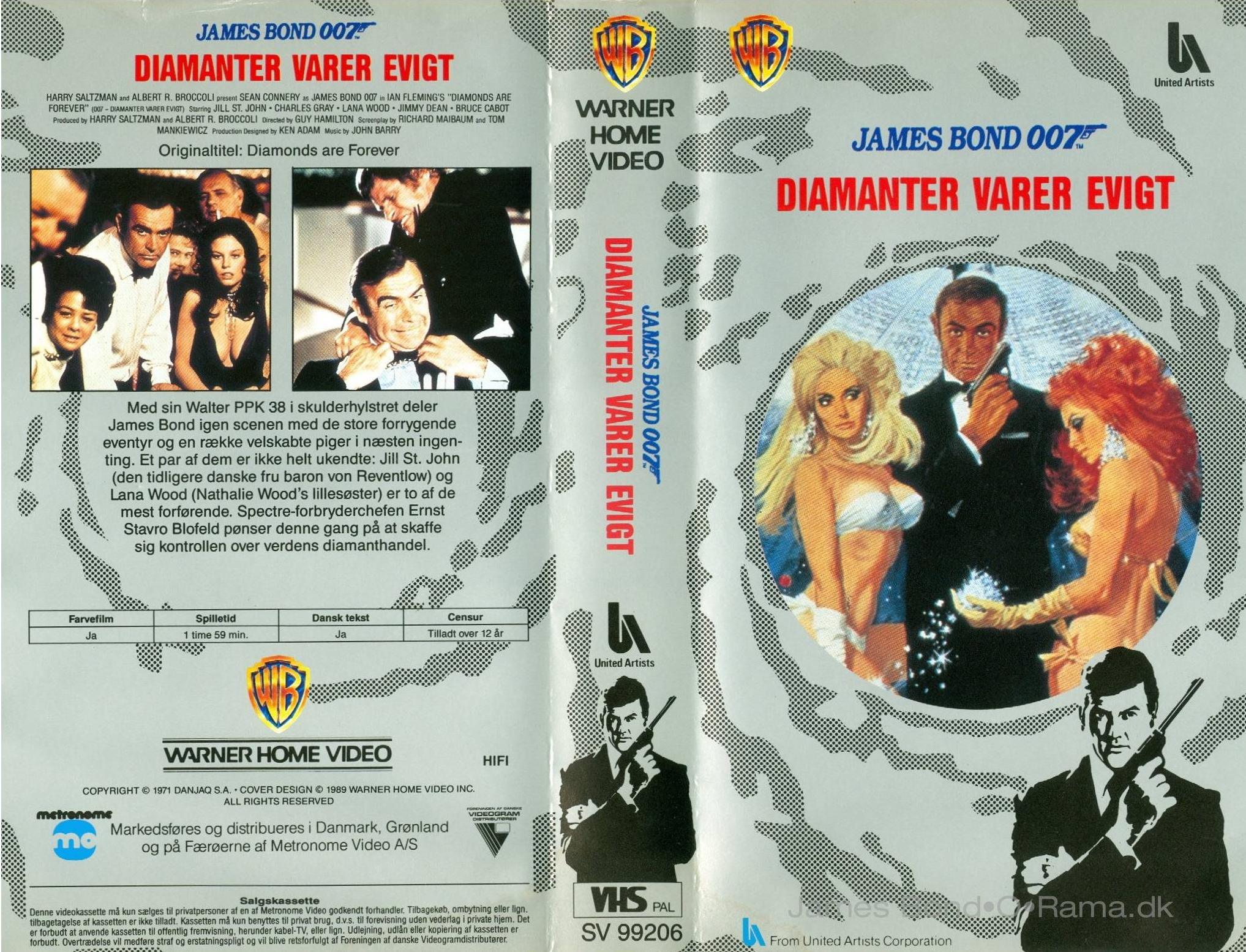Category: Films
“Casino Royale”: Danish release poster (2006)
The 21th James Bond film from EON Productions, "Casino Royale", was released in Danish cinemas on November 24, 2006.
Local distributor Nordisk Film issued this version of the international release poster. (The homepage www.casinoroyalefilmen.dk is no longer active.)
“Tomorrow Never Dies”: First Danish VHS retail (1998)
In 1998 Metronome Video issued "Tomorrow Never Dies", the 18th Bond film from EON Productions, as a retail VHS cassette in Denmark, Greenland and the Faroe Islands.
The reversible cover featured an optional "Classic Bond Collection" layout.
A specially-made 24 page Bond encyclopedia written by Rasmus Paaske Larsen was included in the purchase.
“The Man with the Golden Gun”: The case of the Danish saxophone solo (2020)
BOND MUSIC
Did John Barry compose the saxophone solo heard in “The Man with the Golden Gun”? Or was he in fact using a library cue without crediting the Danish creators Ib Glindemann and Jesper Thilo? Bond•O•Rama.dk examines the evidence.
In 2012, Ib Glindemann, a veteran Danish composer and arranger of film scores and big band jazz, claimed that the saxophone intro of the John Barry track “Getting the Bullet” on the soundtrack album of “The Man with the Golden Gun” (1974) is in fact not “one of Barry’s signature sexy saxophone solos” as Jon Burlingame puts it in his book “The Music of James Bond” but a cue that Glindemann composed as library music for the American market in the early 70’s.
Glindemann said that the tenor saxophone solo was performed by Jesper Thilo, a well-known Danish jazz musician. Thilo later confirmed his participation and even recalled performing the cue in a recording studio on Dortheavej in Copenhagen some 40 years ago.
“Yes - that’s me. I remember performing that solo,” Jesper Thilo said when Bond•O•Rama.dk played back the audio track from “The Man with the Golden Gun” to him in 2012.
The tenor saxophone part is featured on the film’s soundtrack while James Bond (as played by Roger Moore) is courting the belly dancer Saida (Carmen du Sautoy) backstage at a Beirut nightclub.
Film composer Søren Hyldgaard eventually tracked down further details from Glindemann. The cue in question is supposedly titled “Saxophone A” and was sourced from a Chappell Production Music LP from 1973/74.
The compressed production schedule on “The Man with the Golden Gun” meant that John Barry had to come up with 57 full minutes of score in only three weeks' time. One tantalizing theory is that the pressure caused Barry to simply filch Glindemann and Thilo’s cue, take credit for it and hope no-one would ever notice!
Barry passed away in 2011, and neither Hyldgaard nor Glindemann managed to locate a copy of the Chappell LP before their deaths in respectively May 2018 and April 2019. Now, film score enthusiast Jesper Hansen from The Danish Film Music Archive has looked into the matter.
“GoldenEye”: Video report from the Danish gala premiere (TV 2 1996)
The 24 January 1996 edition of the youth programme SuperPuls on Danish network TV 2 covered the Danish gala premiere of "GoldenEye" which took place at Copenhagen's Imperial Cinema on January 11.
The video is mostly in Danish although host Tina Bilsbo is seen interviewing Pierce Brosnan (James Bond 007) on the red carpet. The clip also features interview snippets with Brosnan, composer Eric Serra and singer Tina Turner from the "GoldenEye" EPK (Electronic Press Kit). These are in English with Danish subtitles.
The clip is sourced from a VHS taping which explains the poor image quality.
● Watch more rare video clips on the James Bond•O•Rama Vimeo page
“Casino Royale”: Danish teaser poster (2006)
“Diamonds are Forever”: First Danish VHS retail cover (1989)
In 1989 Warner Home Video issued all of the James Bond 007 films (except the Columbia-produced "Casino Royale" from 1967) on retail VHS through local distributor Metronome Video. The Bond films had not previously been available for sale in Denmark.
This initial retail series had specially designed cover art with raster graphics on a metallic grey background which was obviously meant to resemble Maurice Binder's famous gunbarrel design.
The seventh cassette in the series was "Diamonds are Forever" (EON 1971):
Scan courtesy of Jan Mouritzen.

